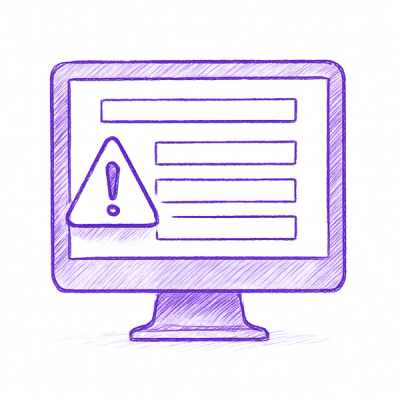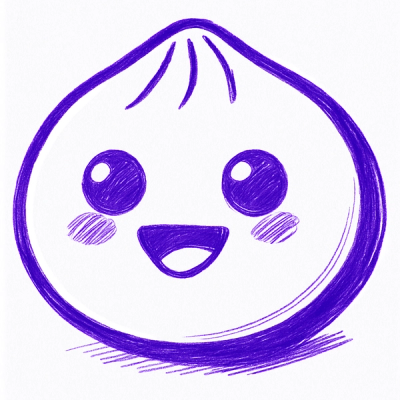
Security News
npm ‘is’ Package Hijacked in Expanding Supply Chain Attack
The ongoing npm phishing campaign escalates as attackers hijack the popular 'is' package, embedding malware in multiple versions.
A convenient and user-friendly anime-style image data processing library that integrates various advanced anime-style image processing models.
A convenient and user-friendly anime-style image data processing library that integrates various advanced anime-style image processing models.
You can simply install it with pip command line from the official PyPI site.
pip install dghs-imgutils
If your operating environment includes a available GPU, you can use the following installation command to achieve higher performance:
pip install dghs-imgutils[gpu]
For more information about installation, you can refer to Installation.
imgutils also includes many other features besides that. For detailed descriptions and examples, please refer to
the official documentation. Here, we won't go into each of them
individually.
For the dataset, we need to filter the differences between the tachie(差分). As shown in the following picture
We can use lpips_clustering to cluster such situations as shown below
from imgutils.metrics import lpips_clustering
images = [f'lpips/{i}.jpg' for i in range(1, 10)]
print(images)
# ['lpips/1.jpg', 'lpips/2.jpg', 'lpips/3.jpg', 'lpips/4.jpg', 'lpips/5.jpg', 'lpips/6.jpg', 'lpips/7.jpg', 'lpips/8.jpg', 'lpips/9.jpg']
print(lpips_clustering(images)) # -1 means noises, the same as that in sklearn
# [0, 0, 0, 1, 1, -1, -1, -1, -1]
We can use imgutils to extract features from anime character images (containing only a single character), calculate
the visual dissimilarity between two characters, and determine whether two images depict the same character. We can also
perform clustering operations based on this metric, as shown below
from imgutils.metrics import ccip_difference, ccip_clustering
# same character
print(ccip_difference('ccip/1.jpg', 'ccip/2.jpg')) # 0.16583099961280823
# different characters
print(ccip_difference('ccip/1.jpg', 'ccip/6.jpg')) # 0.42947039008140564
print(ccip_difference('ccip/1.jpg', 'ccip/7.jpg')) # 0.4037521779537201
print(ccip_difference('ccip/2.jpg', 'ccip/6.jpg')) # 0.4371533691883087
print(ccip_difference('ccip/2.jpg', 'ccip/7.jpg')) # 0.40748104453086853
print(ccip_difference('ccip/6.jpg', 'ccip/7.jpg')) # 0.392294704914093
images = [f'ccip/{i}.jpg' for i in range(1, 13)]
print(images)
# ['ccip/1.jpg', 'ccip/2.jpg', 'ccip/3.jpg', 'ccip/4.jpg', 'ccip/5.jpg', 'ccip/6.jpg', 'ccip/7.jpg', 'ccip/8.jpg', 'ccip/9.jpg', 'ccip/10.jpg', 'ccip/11.jpg', 'ccip/12.jpg']
print(ccip_clustering(images, min_samples=2)) # few images, min_sample should not be too large
# [0, 0, 0, 3, 3, 3, 1, 1, 1, 1, 2, 2]
For more usage, please refer to official documentation of CCIP.
Currently, object detection is supported for anime heads and person, as shown below
Based on practical tests, head detection currently has a very stable performance and can be used for automation tasks. However, person detection is still being further iterated and will focus on enhancing detection capabilities for artistic illustrations in the future.
Anime images can be converted to line drawings using the model provided by patrickvonplaten/controlnet_aux, as shown below.
It is worth noting that the lineart model may consume more computational resources, while canny is the fastest but
has average effect. Therefore, lineart_anime may be the most balanced choice in most cases.
When filtering the crawled images, we need to remove monochrome images. However, monochrome images are often not simply composed of grayscale colors and may still contain colors, as shown by the first two rows of six images in the figure below
We can use is_monochrome to determine whether an image is monochrome, as shown below:
from imgutils.validate import is_monochrome
print(is_monochrome('mono/1.jpg')) # monochrome images
# True
print(is_monochrome('mono/2.jpg'))
# True
print(is_monochrome('mono/3.jpg'))
# True
print(is_monochrome('mono/4.jpg'))
# True
print(is_monochrome('mono/5.jpg'))
# True
print(is_monochrome('mono/6.jpg'))
# True
print(is_monochrome('colored/7.jpg')) # colored images
# False
print(is_monochrome('colored/8.jpg'))
# False
print(is_monochrome('colored/9.jpg'))
# False
print(is_monochrome('colored/10.jpg'))
# False
print(is_monochrome('colored/11.jpg'))
# False
print(is_monochrome('colored/12.jpg'))
# False
For more details, please refer to the official documentation .
The following code can be used to detect incomplete image files (such as images interrupted during the download process):
from imgutils.validate import is_truncated_file
if __name__ == '__main__':
filename = 'test_jpg.jpg'
if is_truncated_file(filename):
print('This image is truncated, you\'d better '
'remove this shit from your dataset.')
else:
print('This image is okay!')
The imgutils library integrates various anime-style image tagging models, allowing for results similar to the
following:
The ratings, features, and characters in the image can be detected, like this:
import os
from imgutils.tagging import get_wd14_tags
rating, features, chars = get_wd14_tags('skadi.jpg')
print(rating)
# {'general': 0.0011444687843322754, 'sensitive': 0.8876402974128723, 'questionable': 0.106781005859375, 'explicit': 0.000277101993560791}
print(features)
# {'1girl': 0.997527003288269, 'solo': 0.9797663688659668, 'long_hair': 0.9905703663825989, 'breasts': 0.9761719703674316,
# 'looking_at_viewer': 0.8981098532676697, 'bangs': 0.8810765743255615, 'large_breasts': 0.9498510360717773,
# 'shirt': 0.8377365469932556, 'red_eyes': 0.945058286190033, 'gloves': 0.9457170367240906, 'navel': 0.969594419002533,
# 'holding': 0.7881088852882385, 'hair_between_eyes': 0.7687551379203796, 'very_long_hair': 0.9301245212554932,
# 'standing': 0.6703325510025024, 'white_hair': 0.5292627811431885, 'short_sleeves': 0.8677047491073608,
# 'grey_hair': 0.5859264731407166, 'thighs': 0.9536856412887573, 'cowboy_shot': 0.8056888580322266,
# 'sweat': 0.8394746780395508, 'outdoors': 0.9473626613616943, 'parted_lips': 0.8986269235610962,
# 'sky': 0.9385137557983398, 'shorts': 0.8408567905426025, 'alternate_costume': 0.4245271384716034,
# 'day': 0.931140661239624, 'black_gloves': 0.8830795884132385, 'midriff': 0.7279844284057617,
# 'artist_name': 0.5333830714225769, 'cloud': 0.64717698097229, 'stomach': 0.9516432285308838,
# 'blue_sky': 0.9655293226242065, 'crop_top': 0.9485014081001282, 'black_shirt': 0.7366660833358765,
# 'short_shorts': 0.7161656618118286, 'ass_visible_through_thighs': 0.5858667492866516,
# 'black_shorts': 0.6186309456825256, 'thigh_gap': 0.41193312406539917, 'no_headwear': 0.467605859041214,
# 'low-tied_long_hair': 0.36282333731651306, 'sportswear': 0.3756745457649231, 'motion_blur': 0.5091936588287354,
# 'baseball_bat': 0.951993465423584, 'baseball': 0.5634750723838806, 'holding_baseball_bat': 0.8232709169387817}
print(chars)
# {'skadi_(arknights)': 0.9869340658187866}
rating, features, chars = get_wd14_tags('hutao.jpg')
print(rating)
# {'general': 0.49491602182388306, 'sensitive': 0.5193622708320618, 'questionable': 0.003406703472137451,
# 'explicit': 0.0007208287715911865}
print(features)
# {'1girl': 0.9798132181167603, 'solo': 0.8046203851699829, 'long_hair': 0.7596215009689331,
# 'looking_at_viewer': 0.7620116472244263, 'blush': 0.46084529161453247, 'smile': 0.48454540967941284,
# 'bangs': 0.5152207016944885, 'skirt': 0.8023070096969604, 'brown_hair': 0.8653596639633179,
# 'hair_ornament': 0.7201820611953735, 'red_eyes': 0.7816740870475769, 'long_sleeves': 0.697688639163971,
# 'twintails': 0.8974947333335876, 'school_uniform': 0.7491052746772766, 'jacket': 0.5015512704849243,
# 'flower': 0.6401398181915283, 'ahoge': 0.43420469760894775, 'pleated_skirt': 0.4528769850730896,
# 'outdoors': 0.5730487704277039, 'tongue': 0.6739872694015503, 'hair_flower': 0.5545973181724548,
# 'tongue_out': 0.6946243047714233, 'bag': 0.5487751364707947, 'symbol-shaped_pupils': 0.7439308166503906,
# 'blazer': 0.4186026453971863, 'backpack': 0.47378358244895935, ':p': 0.4690653085708618, 'ghost': 0.7565015554428101}
print(chars)
# {'hu_tao_(genshin_impact)': 0.9262397289276123, 'boo_tao_(genshin_impact)': 0.942080020904541}
We currently integrate the following tagging models:
In addition, if you need to convert the dict-formatted data mentioned above into the text format required for image
training and tagging, you can also use the tags_to_text function (see the
link here) for formatting, as shown
below:
from imgutils.tagging import tags_to_text
# a group of tags
tags = {
'panty_pull': 0.6826801300048828,
'panties': 0.958938717842102,
'drinking_glass': 0.9340789318084717,
'areola_slip': 0.41196826100349426,
'1girl': 0.9988248348236084
}
print(tags_to_text(tags))
# '1girl, panties, drinking_glass, panty_pull, areola_slip'
print(tags_to_text(tags, use_spaces=True))
# '1girl, panties, drinking glass, panty pull, areola slip'
print(tags_to_text(tags, include_score=True))
# '(1girl:0.999), (panties:0.959), (drinking_glass:0.934), (panty_pull:0.683), (areola_slip:0.412)'
When we need to extract the character parts from anime images, we can use
the segment-rgba-with-isnetis
function for extraction and obtain an RGBA format image (with the background part being transparent), just like the
example shown below.
from imgutils.segment import segment_rgba_with_isnetis
mask_, image_ = segment_rgba_with_isnetis('hutao.png')
image_.save('hutao_seg.png')
mask_, image_ = segment_rgba_with_isnetis('skadi.jpg')
image_.save('skadi_seg.png')
This model can be found at https://huggingface.co/skytnt/anime-seg .
FAQs
A convenient and user-friendly anime-style image data processing library that integrates various advanced anime-style image processing models.
We found that dghs-imgutils demonstrated a healthy version release cadence and project activity because the last version was released less than a year ago. It has 1 open source maintainer collaborating on the project.
Did you know?

Socket for GitHub automatically highlights issues in each pull request and monitors the health of all your open source dependencies. Discover the contents of your packages and block harmful activity before you install or update your dependencies.

Security News
The ongoing npm phishing campaign escalates as attackers hijack the popular 'is' package, embedding malware in multiple versions.

Security News
A critical flaw in the popular npm form-data package could allow HTTP parameter pollution, affecting millions of projects until patched versions are adopted.

Security News
Bun 1.2.19 introduces isolated installs for smoother monorepo workflows, along with performance boosts, new tooling, and key compatibility fixes.